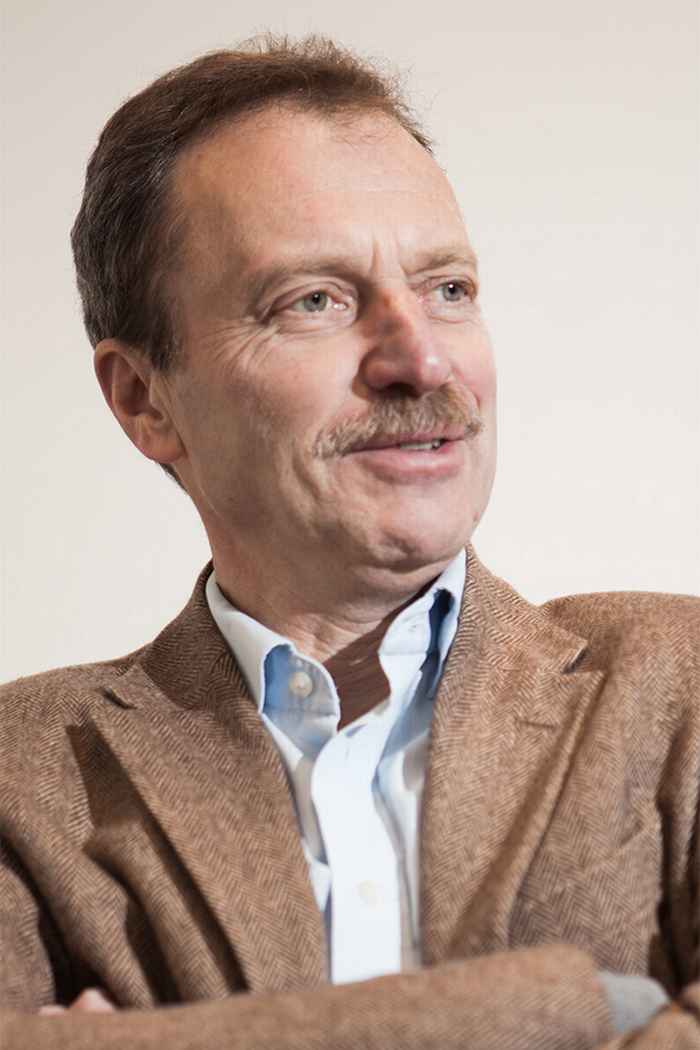Integrating archaeology and philology
An interview with Jesper Eidem

(The following is a shortened version of an interview that appeared in the March 2013 issue of the Faculty of Humanities Newsletter)
As director of the Dutch Institute for the Near East (NINO) and professor of the Archaeology of Western Asia at the University of Amsterdam since March 2012, Jesper Eidem is at the forefront of research into the interaction between written sources and archaeological finds; in effect acting as a bridge between philology and archaeology. ‘My research field perfectly lends itself to an integrated research approach.’
A blossoming interest
Jesper Eidem’s fascination with archaeology already became evident during his early school career. Said Eidem: ‘My teacher of Greek had the ability to tell gripping stories about excavations and archaeological finds; but what interested me even more were the civilisations that preceded the Greek empire.’ Eidem took this interest with him to the University of Copenhagen where, as a student, he chose the specialisation Philology and Archaeology of Western Asia; a programme in which the emphasis was predominantly on the ancient languages of the Near East. ‘Although I am mainly specialised in ancient languages, I have in the course of my academic career increasingly shifted my gaze toward the integration of textual and archaeological sources. Archaeology and philology were - and sometimes still are - separated research areas, while both actually lend themselves to an integrated research method, especially within my specialism. Not only have a lot of archaeological finds been made in the Near East, a plethora of cuneiform texts have also been discovered - some of which date as far back as 4000 years.’
The study programme Languages of the Middle East comprised a small department, with close interaction between students and lecturers. ‘As a student I immediately became involved in my lecturers’ research. For example, I could do research into a very special material that had been excavated in 1957 by Danish archaeologists in Kurdish Iraq.’ Eidem’s PhD thesis (The Shemshāra archives, 1992) eventually arose from one of these research projects. Eidem: ‘During my PhD I focused on both Akkadian, a language spoken in Mesopotamia about 2500-500 BC, and the archaeology of the Near East, for which I used almost 4000-year-old special written sources.’ Eidem is currently in charge of a follow-up research project in Iraq titled ‘From Iran to the Euphrates’. Eidem: ‘Prior to this, I had immersed myself in a short-lived kingdom that existed about 4000 years ago in the north of Iraq and Syria and stretched from Iran to the Euphrates. We currently know about this kingdom, ruled by king Shamshi-Adad I (approx. 1833-1776 BC), from the cuneiform texts that were excavated in the area. Less is known, however, about the archaeological aspect thereof. I am attempting to make an integrated analysis of this kingdom and thereby explore aspects of state-building, such as executive, economic and administrative powers. I also explore how ethno-linguistic and social-economic groups integrated into this structure. In doing so, I hope to come to an historical and archaeological model for the rise, organisation and demise of this kingdom.’
Maintaining a university tradition
Archaeological research into the Near East is traditionally done at Leiden University and in Amsterdam, at both the University of Amsterdam and the VU University Amsterdam. At the VU the onus is predominantly on the Near East and later periods of Classical Antiquity, while in Leiden the focus is on earlier periods. How does the UvA position itself? Eidem: ‘After the retirement and passing of Maurits van Loon, Emeritus Professor of the Archaeology of Western Asia, there was no professor in this field, while at the UvA a rich research tradition had been established. I hope to use my appointment as a way of maintaining and building on this tradition. Innovative methods and interdisciplinary projects offer ways of doing so, such as the creation of the Amsterdam Centre for Ancient Studies and Archaeology (ACASA), which is a joint endeavour between the classics and archaeology departments of the UvA and the VU. This ensures that the archaeological research of the Near East remains rooted in Leiden and Amsterdam.’
Future plans
Eidem has several aims for the coming years. ‘First of all I would like to do a lot of fieldwork and hopefully get the opportunity to successfully complete a currently ongoing research project in Syria. Except for a stable political climate, other factors such as time and money also play a role. I also hope that the cultural heritage is preserved, although you need to be realistic. In a country like Syria there are so many archaeological sites that it would be financially impossible to safeguard all of them. The danger thereby does not only emanate from the local population, but also from governments, which for example submerge historical sites to build a dam. Archaeologists were in the past allowed to first do soil research, thus ensuring that important cultural heritage didn't disappear.’
Aside from these aims, Eidem is also looking forward to training a new generation of archaeologists and arousing in them a curiosity for the Near East. ‘During the past year I gave the elective course “Themes in Western Asian Archaeology”, which gives an introduction to the archaeology of the Near East. That was the moment I realised how much I had missed lecturing during the past few years. Moreover, it is interesting to observe how Dutch universities operate on the inside. I am also involved in a PhD project, of which I hope to supervise more in the coming years. Because the lines of communication between student and lecturer are short within the programme, interested students are given the opportunity to contribute to research relatively quickly. In my opinion, that is the great advantage of being a small study programme.’